
Lorem ipsum dolor sit amet, consectetur adipiscing elit. Ut fringilla neque sed sodales aliquam. Etiam feugiat tincidunt erat, vitae euismod urna fermentum in. Integer et viverra velit. Maecenas euismod, felis quis laoreet scelerisque, leo ipsum tempor metus, id sodales quam massa et ex. Donec consectetur ultricies magna, ut tempus urna. Ut at est aliquet, tempor metus sed, placerat lacus. Suspendisse vitae justo lobortis lectus blandit porttitor. Duis sed massa posuere, facilisis ante sed, lobortis turpis. Nam sed congue ante. Etiam vulputate mollis turpis at vestibulum. Quisque varius sapien ultricies lectus rutrum commodo. Nunc augue odio, bibendum quis blandit quis, eleifend nec leo. Duis in erat eros. Suspendisse vitae risus sit amet mi tincidunt vehicula vitae sit amet erat.
Lorem ipsum dolor sit amet, consectetur adipiscing elit. Suspendisse posuere sollicitudin turpis, vitae fermentum eros ultricies vel. Cras non tortor nec metus tincidunt ultricies. Vivamus efficitur metus sit amet justo commodo scelerisque. Sed sed urna bibendum, malesuada justo ac, consequat nisl. Quisque non venenatis nibh. Maecenas non luctus lacus, id consequat dui. Fusce aliquam quam ut ante tincidunt egestas. Suspendisse imperdiet, erat nec aliquam euismod, urna lacus elementum ligula, eu rutrum felis dolor at nisl.
Etiam nec lobortis nisi. In congue turpis quis velit porttitor dictum. Cras ultrices ac ex ac sodales. Proin fringilla tortor non quam ultrices, at scelerisque quam elementum. Etiam quis ligula ac ligula consectetur dignissim. Aliquam erat volutpat. Etiam leo metus, ullamcorper eu nibh et, faucibus tristique eros. Nullam ultrices at nibh vel viverra. Interdum et malesuada fames ac ante ipsum primis in faucibus. Quisque quis faucibus nunc. Etiam ornare et ante sed rutrum. Morbi sed lorem sed tellus viverra pretium et eget urna. Duis viverra iaculis augue, nec lacinia massa ultrices non.
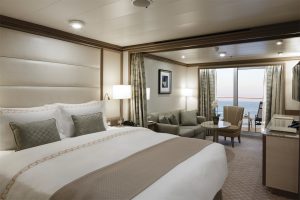
Suites – View Deck Plans and Suite Details
- Starting Price $10,500 per person – Deluxe Veranda – 376 sq ft
- +$3,536 per person – Silver Suite – 746 sq ft
- +$6,032 per person – Royal Suite One-bedroom – 990 sq ft
- +$7,384 per person – Grand Suite One-bedroom – up to 1,532 sq ft
- +$9,464 per person – Owner’s Suite One-bedroom – 1,292 sq ft
- +$8,736 per person – Silver Suite Two-bedroom – 1,366 sq ft
- +$10,712 per person – Royal Suite Two-bedroom – 1,366 sq ft
- +$11,960 per person – Grand Suite Two-bedroom – up to 1,879 sq ft
- +$14,768 per person – Owner’s Suite Two-bedroom – 1,668 sq ft

Etiam nec lobortis nisi. In congue turpis quis velit porttitor dictum. Cras ultrices ac ex ac sodales. Proin fringilla tortor non quam ultrices, at scelerisque quam elementum. Etiam quis ligula ac ligula consectetur dignissim. Aliquam erat volutpat. Etiam leo metus, ullamcorper eu nibh et, faucibus tristique eros. Nullam ultrices at nibh vel viverra. Interdum et malesuada fames ac ante ipsum primis in faucibus. Quisque quis faucibus nunc. Etiam ornare et ante sed rutrum. Morbi sed lorem sed tellus viverra pretium et eget urna. Duis viverra iaculis augue, nec lacinia massa ultrices non.
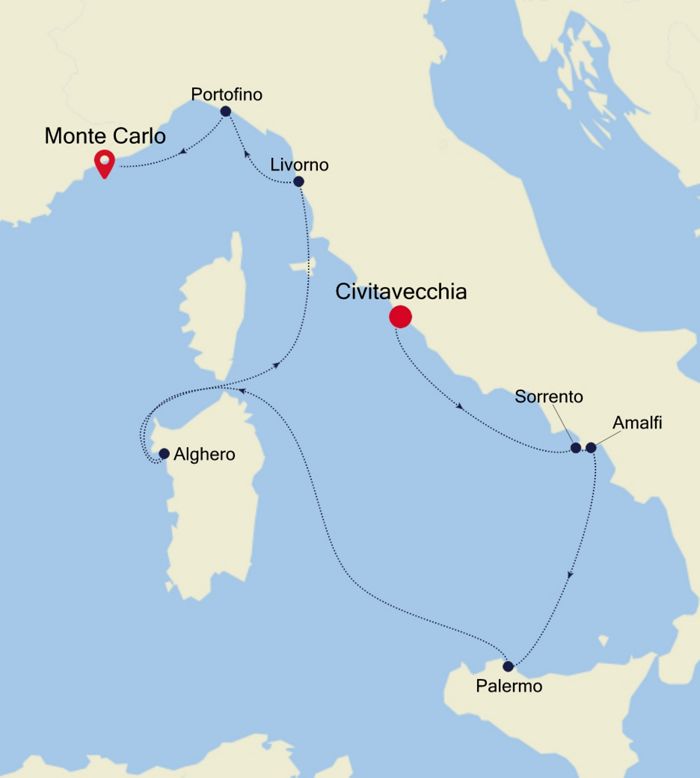
Rome (Civitavecchia)
to Monte Carlo
| Departure | Length | Ship |
|---|---|---|
| Sep 29 2019 | 9 Nights | Silver Spirit |
Deluxe Veranda From $8,000
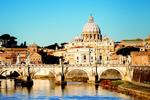 SUNDAY 29 SEP
SUNDAY 29 SEP
Departure 6:00 PMRome (Civitavecchia)
Italy
Italy’s vibrant capital lives in the present, but no other city on earth evokes its past so powerfully. For over 2,500 years, emperors, popes, artists, and common citizens have left their mark here. Archaeological remains from ancient Rome, art-stuffed churches, and the treasures of Vatican City vie for your attention, but Rome is also a wonderful place to practice the Italian-perfected il dolce far niente, the sweet art of idleness. Your most memorable experiences may include sitting at a caffè in the Campo de’ Fiori or strolling in a beguiling piazza.
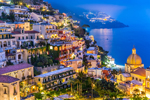 MONDAY 30 SEP
MONDAY 30 SEP
Arrive 8:00 AMSorrento
Italy
Sorrento may have become a jumping-off point for visitors to Pompeii, Capri, and Amalfi, but you can find countless reasons to love it for itself. The Sorrentine people are fair-minded and hardworking, bubbling with life and warmth. The tuff cliff on which the town rests is spread over the bay, absorbing sunlight, while orange and lemon trees waft their perfume in spring. Winding along a cliff above a small beach and two harbors, the town is split in two by a narrow ravine formed by a former mountain stream. To the east, dozens of hotels line busy Via Correale along the cliff—many have “grand” included in their names, and some indeed still are. To the west, however, is the historic sector, which still enchants. It’s a relatively flat area, with winding, stone-paved lanes bordered by balconied buildings, some joined by medieval stone arches. The central piazza is named after the poet Torquato Tasso, born here in 1544. This part of town is a delightful place to walk through. Craftspeople are often at work in their stalls and shops and are happy to let you watch; in fact, that’s the point. Music spots and bars cluster in the side streets near Piazza Tasso.
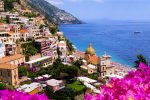 TUESDAY 01 OCT
TUESDAY 01 OCT
Departure 8:00 AMSorrento
Italy
Sorrento may have become a jumping-off point for visitors to Pompeii, Capri, and Amalfi, but you can find countless reasons to love it for itself. The Sorrentine people are fair-minded and hardworking, bubbling with life and warmth. The tuff cliff on which the town rests is spread over the bay, absorbing sunlight, while orange and lemon trees waft their perfume in spring. Winding along a cliff above a small beach and two harbors, the town is split in two by a narrow ravine formed by a former mountain stream. To the east, dozens of hotels line busy Via Correale along the cliff—many have “grand” included in their names, and some indeed still are. To the west, however, is the historic sector, which still enchants. It’s a relatively flat area, with winding, stone-paved lanes bordered by balconied buildings, some joined by medieval stone arches. The central piazza is named after the poet Torquato Tasso, born here in 1544. This part of town is a delightful place to walk through. Craftspeople are often at work in their stalls and shops and are happy to let you watch; in fact, that’s the point. Music spots and bars cluster in the side streets near Piazza Tasso.
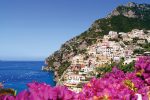 TUESDAY 01 OCT
TUESDAY 01 OCT
11:30 AM – 7:00 PMAmalfi
Italy
At first glance, it’s hard to imagine that this resort destination, set in a verdant valley of the Lattari Mountains, with its cream-color and pastel-hue buildings tightly packing a gorge on the Bay of Salerno, was in the 11th and 12th centuries the seat of the Amalfi Maritime Republic, one of the world’s great naval powers, and a sturdy rival of Genoa and Pisa for control of the Mediterranean. The harbor, which once launched the greatest fleet in Italy, now bobs with ferries and blue-and-white fishing boats. The main street, lined with leather shops and pasticcerie, has replaced a raging mountain torrent, and terraced hills where banditti (bandits) once roamed now flaunt the green and gold of lemon groves. Bearing testimony to its great trade with Tunis, Tripoli, and Algiers, Amalfi remains honeycombed with Arab-Sicilian cloisters and covered passages. In a way Amalfi has become great again, showing off its medieval glory days with sea pageants, convents-turned-hotels, ancient paper mills, covered streets, and its mosquelike cathedral. A plaque under Amalfi’s Porta Marina bears this inscription: “The judgment day, when Amalfitans go to Heaven, will be a day like any other.” Visitors to this charming city, set in a verdant valley of the Lattari Mountains, will soon understand what it means. For sheer picturesqueness, it can’t be beat. Drinking in the vista of the town against the sea from the balcony of the town’s historic landmark Convento di Amalfi is like getting an advance on paradise. Amalfi’s origin is clouded. One legend says that a general of Constantine’s army, named Amalfo, settled here in 320; another tale has it that Roman noblemen from the village of Melphi (in Latin, “a Melphi”), fleeing after the fall of the empire, were first in these parts, shipwrecked in the 4th century on their way to Constantinople. Myth becomes fact by the 6th century, when Amalfi is inscribed in the archives as a Byzantine diocese, and the historical pageant really begins. Its geographic position was good defense, and the distance from Constantinople made its increasing autonomy possible. Continuously hammered by the Lombards and others, in 839 it rose against and finally sacked nearby Salerno, to which its inhabitants had been deported. In the 10th century, Amalfi constructed many churches and monasteries and was ruled by judges, later called doges—self-appointed dukes who amassed vast wealth and power. From the 9th century until 1101, Amalfi remained linked to Byzantium but also was increasingly independent and prosperous, perhaps the major trading port in southern Italy. Its influence loomed large, thanks to its creation of the Tavola Amalfitana, a code of maritime laws taken up by most medieval-era kingdoms. Amalfi created its own gold and silver coins—or tari, engraved with the cross of Amalfi—and ruled a vast territory. With trade extending as far as Alexandria and Constantinople—where a large colony of Amalfitan merchants resided—it became Italy’s first maritime republic, ahead of rivals Pisa, Venice, and Genoa; the population swelled to about 100,000, many of them seafarers and traders. As William of Apulia wrote in the 11th century, “No other city is richer in silver, cloth, and gold. A great many navigators live in this city… famous almost throughout the world as those who travel to where there is something worth buying.But the days of wine and doges were about to end. In the 11th century Robert Guisgard of Normandy—in the duplicitous spirit of politicos to thisday—first aided, then sacked the town, and the Normans from Sicily returned, after a short Amalfitan revolt, in the 12th century. Then, when the Republic of Pisa twice conquered it, Amalfi fell into decline, hastened by a horrific storm in 1343, then by an indirect blow from Christopher Columbus’s discoveries, which opened the world beyond to competing trade routes. By the 18th century, the town had sunk into gloom, looking to its lemons and handmade paper for survival. After the state road was built by Ferdinand, the Bourbon king of Naples, in the 19th century, Amalfi evolved into a tourist destination, drawing Grand Tour—era travelers like Richard Wagner, Henry Wadsworth Longfellow, and Henrik Ibsen, all of whom helped spread Amalfi’s fame.
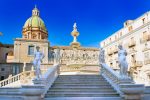 TUESDAY 02 OCT
TUESDAY 02 OCT
8:00 AM – 7:00 PMPalermo (Sicily)
Italy
Once the intellectual capital of southern Europe, Palermo has always been at the crossroads of civilization. Favorably situated on a crescent-shaped bay at the foot of Monte Pellegrino, it has attracted almost every culture touching the Mediterranean world. To Palermo’s credit, it has absorbed these diverse cultures into a unique personality that is at once Arab and Christian, Byzantine and Roman, Norman and Italian. The city’s heritage encompasses all of Sicily’s varied ages, but its distinctive aspect is its Arab-Norman identity, an improbable marriage that, mixed in with Byzantine and Jewish elements, created some resplendent works of art. No less noteworthy than the architecture is Palermo’s chaotic vitality, on display at some of Italy’s most vibrant outdoor markets, public squares, street bazaars, and food vendors, and above all in its grand climax of Italy’s most spectacular passeggiata (the leisurely social stroll along the principal thoroughfare).
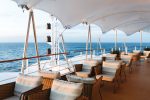 THURSDAY 03 OCTDay at Sea
THURSDAY 03 OCTDay at Sea
Days at sea are the perfect opportunity to relax, unwind and catch up with what you’ve been meaning to do. So whether that is whale watching from the Observatory Lounge, writing home to your loved ones or simply topping up your tan by the pool, these blue sea days are the perfect balance to busy days spent exploring shore side.
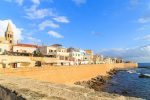 FRIDAY 04 OCT
FRIDAY 04 OCT
8:00 AM – 4:00 PMAlghero (Sardinia)
Italy
A tourist-friendly town of about 45,000 inhabitants with a distinctly Spanish flavor, Alghero is also known as “Barcelonetta” (little Barcelona). Rich wrought-iron scrollwork decorates balconies and screened windows; a Spanish motif appears in stone portals and bell towers. The town was built and inhabited in the 14th century by the Aragonese and Catalans, who constructed seaside ramparts and sturdy towers encompassing an inviting nucleus of narrow, winding streets with whitewashed palazzi. The native language spoken here is a version of Catalan, not Italian, although you probably have to attend one of the Masses conducted in Algherese (or listen in on stories swapped by older fishermen) to hear it. Besides its historic architectural gems such as the Alghero Cathedral and Palazzo d’Albis, the fortified city is well worth a visit to simply stroll and discover local culture on narrow cobblestone streets. The city also has a reputation to serve great food at reasonable prices.
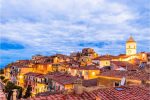 SATURDAY 05 OCT
SATURDAY 05 OCT
8:00 AM – 7:00 PMLivorno (Tuscany)
Italy
Livorno is a gritty city with a long and interesting history. In the early Middle Ages it alternately belonged to Pisa and Genoa. In 1421 Florence, seeking access to the sea, bought it. Cosimo I (1519–74) started construction of the harbor in 1571, putting Livorno on the map. After Ferdinando I de’ Medici (1549–1609) proclaimed Livorno a free city, it became a haven for people suffering from religious persecution; Roman Catholics from England and Jews and Moors from Spain and Portugal, among others, settled here. The Quattro Mori (Four Moors), also known as the Monument to Ferdinando I, commemorates this. (The statue of Ferdinando I dates from 1595, the bronze Moors by Pietro Tacca from the 1620s.) In the following centuries, and particularly in the 18th, Livorno boomed as a port. In the 19th century the town drew a host of famous Britons passing through on their grand tours. Its prominence continued up to World War II, when it was heavily bombed. Much of the town’s architecture, therefore, postdates the war, and it’s somewhat difficult to imagine what it might have looked like before. Livorno has recovered from the war, however, as it’s become a huge point of departure for container ships, as well as the only spot in Tuscany for cruise ships to dock for the day. Most of Livorno’s artistic treasures date from the 17th century and aren’t all that interesting unless you dote on obscure baroque artists. Livorno’s most famous native artist, Amedeo Modigliani (1884–1920), was of much more recent vintage. Sadly, there’s no notable work by him in his hometown. There may not be much in the way of art, but it’s still worth strolling around the city. The Mercato Nuovo, which has been around since 1894, sells all sorts of fruits, vegetables, grains, meat, and fish. Outdoor markets nearby are also chock-full of local color. The presence of Camp Darby, an American military base just outside town, accounts for the availability of many American products. If you have time, Livorno is worth a stop for lunch or dinner at the very least.
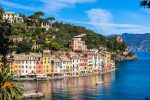 SUNDAY 06 OCT
SUNDAY 06 OCT
8:00 AM – 11:00 PMPortofino
Italy
One of the most photographed villages along the coast, with a decidedly romantic and affluent aura, Portofino has long been a popular destination for the rich and famous. Once an ancient Roman colony and taken by the Republic of Genoa in 1229, it’s also been ruled by the French, English, Spanish, and Austrians, as well as by marauding bands of 16th-century pirates. Elite British tourists first flocked to the lush harbor in the mid-1800s. Some of Europe’s wealthiest drop anchor in Portofino in summer, but they stay out of sight by day, appearing in the evening after buses and boats have carried off the day-trippers. There’s not actually much to do in Portofino other than stroll around the wee harbor, see the castle, walk to Punta del Capo, browse at the pricey boutiques, and sip a coffee while people-watching. However, weaving through picture-perfect cliffside gardens and gazing at yachts framed by the turquoise Ligurian Sea and the cliffs of Santa Margherita can make for quite a relaxing afternoon. There are also several tame, photo-friendly hikes into the hills to nearby villages. Unless you’re traveling on a deluxe budget, you may want to stay in Camogli or Santa Margherita Ligure rather than at one of Portofino’s few very expensive hotels. Restaurants and cafés are good.
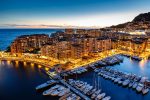 MONDAY 07 OCT
MONDAY 07 OCT
Arrive 8:00 AMMonte Carlo
Monaco
On one of the best stretches of the Mediterranean, this classic luxury destination is one of the most sought-after addresses in the world. With all the high-rise towers you have to look hard to find the Belle Époque grace of yesteryear. But if you head to the town’s great 1864 landmark Hôtel de Paris—still a veritable crossroads of the buffed and befurred Euro-gentry—or enjoy a grand bouffe at its famous Louis XV restaurant, or attend the opera, or visit the ballrooms of the casino, you may still be able to conjure up Monaco’s elegant past. Prince Albert II, a political science graduate from Amherst College, traces his ancestry to Otto Canella, who was born in 1070. The Grimaldi dynasty began with Otto’s great-great-great-grandson, Francesco Grimaldi, also known as Frank the Rogue. Expelled from Genoa, Frank and his cronies disguised themselves as monks and in 1297 seized the fortified medieval town known today as Le Rocher (the Rock). Except for a short break under Napoléon, the Grimaldis have been here ever since, which makes them the oldest reigning family in Europe. In the 1850s a Grimaldi named Charles III made a decision that turned the Rock into a giant blue chip. Needing revenue but not wanting to impose additional taxes on his subjects, he contracted with a company to open a gambling facility. The first spin of the roulette wheel was on December 14, 1856. There was no easy way to reach Monaco then—no carriage roads or railroads—so no one came. Between March 15 and March 20, 1857, one person entered the casino—and won two francs. In 1868, however, the railroad reached Monaco, and it was filled with Englishmen who came to escape the London fog. The effects were immediate. Profits were so great that Charles eventually abolished all direct taxes. Almost overnight, a threadbare principality became an elegant watering hole for European society. Dukes (and their mistresses) and duchesses (and their gigolos) danced and dined their way through a world of spinning roulette wheels and bubbling champagne—preening themselves for nights at the opera, where such artists as Vaslav Nijinsky, Sarah Bernhardt, and Enrico Caruso came to perform. Along with the tax system, its sensational position on a broad, steep peninsula that bulges into the Mediterranean—its harbor sparkling with luxury cruisers, its posh mansions angling awnings toward the nearly perpetual sun—continues to draw the rich and famous. One of the latest French celebrities to declare himself “Monégasque,” thus giving up his French passport, is superchef Alain Ducasse, who said that he made the choice out of affection for Monaco rather than tax reasons. Pleasure boats vie with luxury cruisers in their brash beauty and Titanic scale, and teams of handsome young men—themselves dyed blond and tanned to match—scour and polish every gleaming surface. As you might expect, all this glitz doesn’t come cheap. Eating is expensive, and even the most modest hotels cost more here than in nearby Nice or Menton. As for taxis, they don’t even have meters so you are completely at the driver’s mercy (with prices skyrocketing during events such as the Grand Prix). For the frugal, Monaco is the ultimate day-trip, although parking is as coveted as a room with a view. At the very least you can afford a coffee at Starbucks. The harbor district, known as La Condamine, connects the new quarter, officially known as Monte Carlo with Monaco-Ville (or Le Rocher), a medieval town on the Rock, topped by the palace, the cathedral, and the Oceanography Museum. Have no fear that you’ll need to climb countless steps to get to Monaco-Ville, as there are plenty of elevators and escalators climbing the steep cliffs. But shuttling between the lovely casino grounds of Monte Carlo and Old Monaco, separated by a vast port, is a daunting proposition for ordinary mortals without wings, so hop on the No. 1 bus from Saint Roman, or No. 2 from the Jardin Exotique – Both stop at Place du Casino and come up to Monaco Ville.
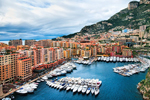 TUESDAY 08 OCT
TUESDAY 08 OCT
DisembarkMonte Carlo
Monaco
On one of the best stretches of the Mediterranean, this classic luxury destination is one of the most sought-after addresses in the world. With all the high-rise towers you have to look hard to find the Belle Époque grace of yesteryear. But if you head to the town’s great 1864 landmark Hôtel de Paris—still a veritable crossroads of the buffed and befurred Euro-gentry—or enjoy a grand bouffe at its famous Louis XV restaurant, or attend the opera, or visit the ballrooms of the casino, you may still be able to conjure up Monaco’s elegant past. Prince Albert II, a political science graduate from Amherst College, traces his ancestry to Otto Canella, who was born in 1070. The Grimaldi dynasty began with Otto’s great-great-great-grandson, Francesco Grimaldi, also known as Frank the Rogue. Expelled from Genoa, Frank and his cronies disguised themselves as monks and in 1297 seized the fortified medieval town known today as Le Rocher (the Rock). Except for a short break under Napoléon, the Grimaldis have been here ever since, which makes them the oldest reigning family in Europe. In the 1850s a Grimaldi named Charles III made a decision that turned the Rock into a giant blue chip. Needing revenue but not wanting to impose additional taxes on his subjects, he contracted with a company to open a gambling facility. The first spin of the roulette wheel was on December 14, 1856. There was no easy way to reach Monaco then—no carriage roads or railroads—so no one came. Between March 15 and March 20, 1857, one person entered the casino—and won two francs. In 1868, however, the railroad reached Monaco, and it was filled with Englishmen who came to escape the London fog. The effects were immediate. Profits were so great that Charles eventually abolished all direct taxes. Almost overnight, a threadbare principality became an elegant watering hole for European society. Dukes (and their mistresses) and duchesses (and their gigolos) danced and dined their way through a world of spinning roulette wheels and bubbling champagne—preening themselves for nights at the opera, where such artists as Vaslav Nijinsky, Sarah Bernhardt, and Enrico Caruso came to perform. Along with the tax system, its sensational position on a broad, steep peninsula that bulges into the Mediterranean—its harbor sparkling with luxury cruisers, its posh mansions angling awnings toward the nearly perpetual sun—continues to draw the rich and famous. One of the latest French celebrities to declare himself “Monégasque,” thus giving up his French passport, is superchef Alain Ducasse, who said that he made the choice out of affection for Monaco rather than tax reasons. Pleasure boats vie with luxury cruisers in their brash beauty and Titanic scale, and teams of handsome young men—themselves dyed blond and tanned to match—scour and polish every gleaming surface. As you might expect, all this glitz doesn’t come cheap. Eating is expensive, and even the most modest hotels cost more here than in nearby Nice or Menton. As for taxis, they don’t even have meters so you are completely at the driver’s mercy (with prices skyrocketing during events such as the Grand Prix). For the frugal, Monaco is the ultimate day-trip, although parking is as coveted as a room with a view. At the very least you can afford a coffee at Starbucks. The harbor district, known as La Condamine, connects the new quarter, officially known as Monte Carlo with Monaco-Ville (or Le Rocher), a medieval town on the Rock, topped by the palace, the cathedral, and the Oceanography Museum. Have no fear that you’ll need to climb countless steps to get to Monaco-Ville, as there are plenty of elevators and escalators climbing the steep cliffs. But shuttling between the lovely casino grounds of Monte Carlo and Old Monaco, separated by a vast port, is a daunting proposition for ordinary mortals without wings, so hop on the No. 1 bus from Saint Roman, or No. 2 from the Jardin Exotique – Both stop at Place du Casino and come up to Monaco Ville.
